
Now this is the Law of the Jungle—
As old and as true as the sky,
And the Wolf that shall keep it may prosper,
But the Wolf that shall break it must die
—Rudyard Kipling
Most of us have grown up with Mowgli, the little boy who was raised by wolves, befriended a black panther and a bear, fought and killed a tiger, and returned to his village where fellow humans lived in Rudyard Kipling's collection of stories, The Jungle Book. So you can imagine my excitement on discovering that just when it turns 150, not only is Walt Disney's new version running in the theaters, but Taj Safaris has tied up with South Africa-based and Beyond to introduce a Mowgli trail.
Kipling's jungle, according to people who've studied the series, stretches from Pench to Kanha in Madhya Pradesh, connected through a thick dense forest cover. Taj Safaris has properties in both, but I'm headed to the Banjar Tola one in Kanha National Park.
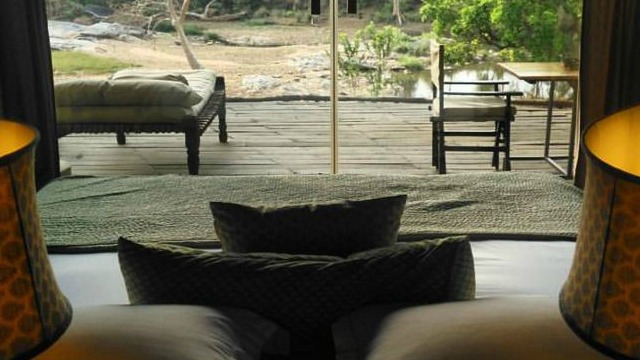
The Taj Safari tent at Banjar Tola
A five and half hour drive from Nagpur airport, the route takes us through Vidarbha's dry foliage with the topography gradually changing to a variery of greens as we enter Madhya Pradesh. The summer heat is up at 42 degrees celsius, but thankfully our car has air-conditioning. As we turn towards Banjar Tola's East Camp, with a rough ride up to the lobby, I realise we're going to live in the jungle itself. But no animals are in sight; we assume they too are taking shade in some place cooler.
Our luxury tents look rustic with wooden flooring, but the facilities are plush—a queen-sized bed with direct view of the jungle and Banjar Tola river, a watering hole for the deer; the bathroom is gigantic with a separate shower, bath tub and dressing area! I felt like Harry Potter from the fourth book of the series, entering the Prefects bathroom for the first time.

Although we were up by 4.30 am, it's not until 6 am that the forest gates opened. Before entering our naturalist gave a copy of our identity cards to the officials. If you break the rules, such as touching the animals or entering the reserved zones that comprise 80% of any Indian forest, you'll face a lifetime ban. You can't fool them; they have your records!
With five hours in hand (visting hours end at 11 am), everyone including our guides—Srinidhi, Narayan and Nikita—were in a rush to enter first. We were seventh in line. As soon as the gates opened, vehicles zoomed in (some with such speeds that passengers held on to the rods to avoid falling out), but Narayan was cautious. “We’re not allowed to exceed 20 km/h. Not everybody follows this rule because everyone wants to spot a tiger,” he explained. Although he reassured us that this month saw several tiger spotting, I wasn't going get my hopes high. Despite visits to several tiger reserves, I hadn't seen one. But secretly, I did hope. Meanwhile he teased, “That doesn't mean you should not see the other animals”.
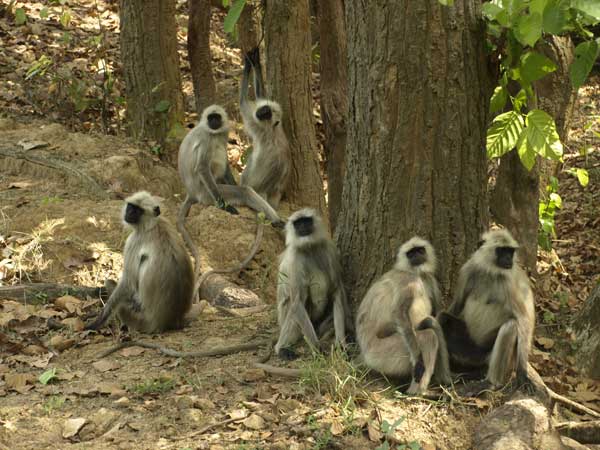
Our first welcome was from a group of langurs at the foot of a tree. Unlike their counterparts in North India, they are less aggressive and tend to keep their distance from humans, but that didn't stop them from posing for our cameras. The infants, however, we're told tend to be more curious and so held by their mothers so they don’t get run over by vehicles.
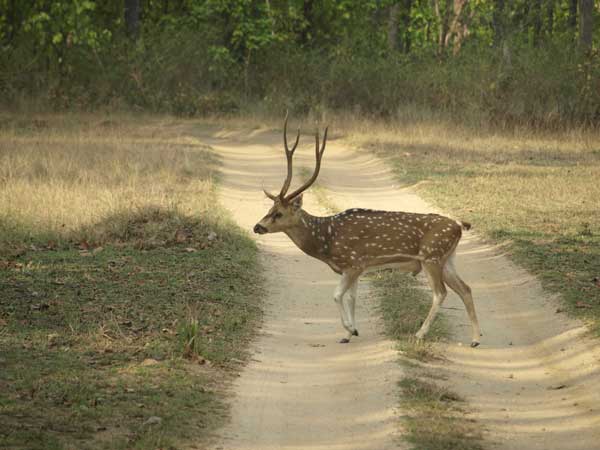
Next came the spotted deer, who at first ignored us as if they were used to vehicles and continued their routine—grazing and drinking water. But sometimes when we stopped and pointed at them in excitement, they fled thinking we were predators, leaving us with no photo ops. However, I still managed some good ones.
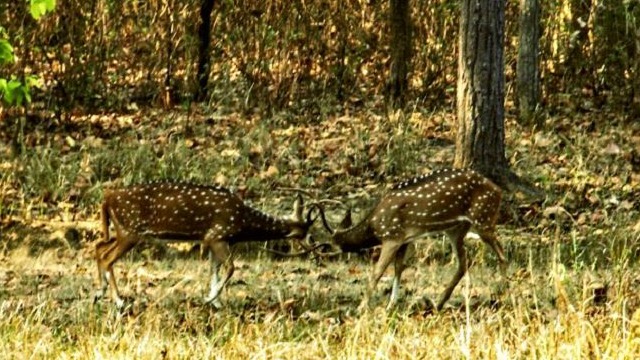
Spotted deer fight at Kanha Wildlife Sanctuary - Jayadev Calamur/dna
Almost 6 km into the forest, a female gaur (Indian bison) and its calf decided to lead the way, but we didn’t dare to go too close, worried the mother may charge at us. That's when Nikita showed us a video of a tiger stalking a bison and the bison attacking the tiger, forcing it to retreat.
“It’s capable of toppling over a SUV,” added Srinidhi.
Still no roar from Mr. Sher Khan. At one spot Narayan stopped the car pointed to fresh droppings, saying a tiger was close, then pointing to a giant pugmark as proof, other vehicles too rushed in search of the beast. Now you know why I didn't want to keep my hopes high. Through the course of the safari, we watched peacocks trying to impress peahens, pea fowls running away across dirt tracks, mongoose scurried in their burrows, jackals and a variety of birds including eagles, the Indian roller and different species of the now critically endangered vultures. You may be surprised, but I was happy. This was the most I'd seen in any jungle!
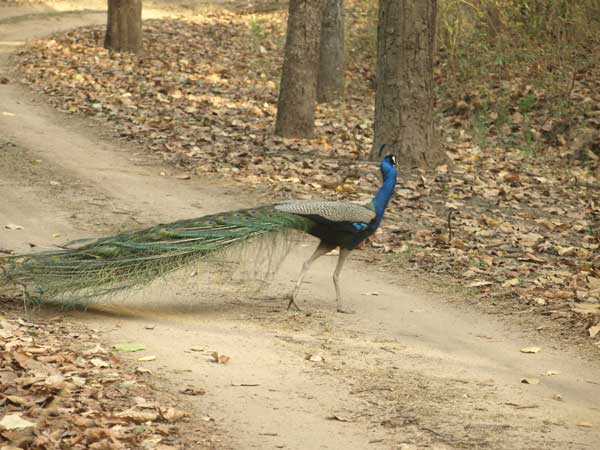
And just then following a deer's call of fear, Narayan screamed, “Tiger!”
The cat knew she was being followed by a number of jeeps, but moved at her own pace—neither too slow, nor too fast with a lazy elegance. Unlike the langurs, she didn’t bother to stop and pose as if suggesting, “I’m moving. If you want a picture, take it now.” When some vehicles accelerated to give passengers a better view, she turned around, glared at the drivers for a few seconds and then disappeared into the bushes.
Now even if we spot another animal, it won't matter. The Mowgli trail is a safari like no other that I've experienced. If I could afford it, I would most certainly do it again.